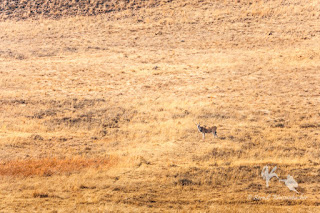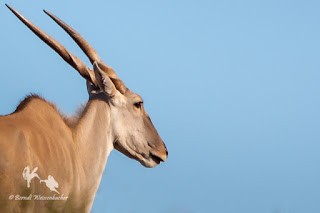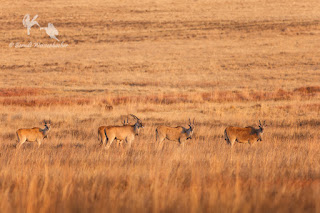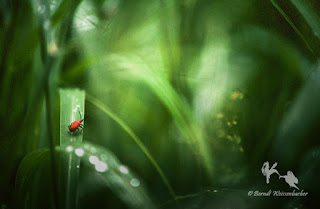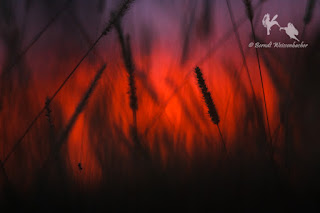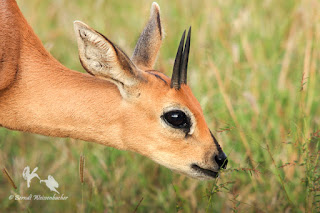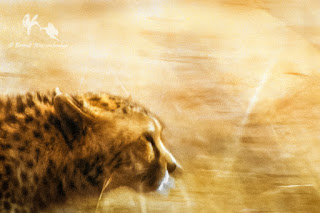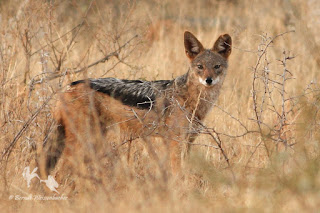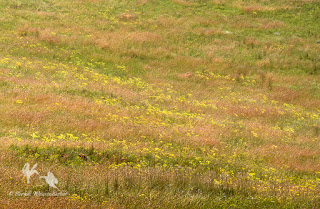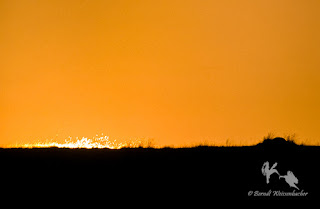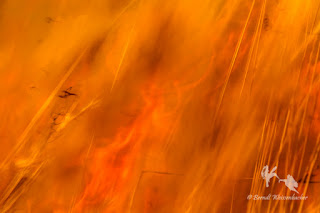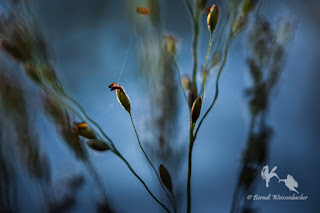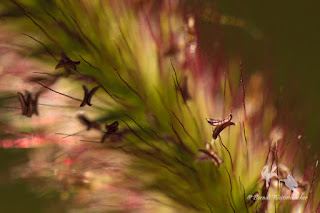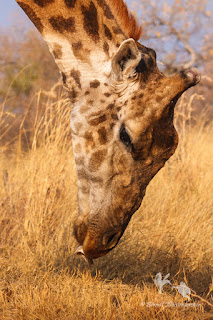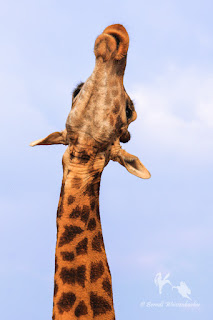One of my favourite photography destinations is
Mokala National Park in the Northern Cape Province of South Africa. This
photogenic environment with its great diversity of bushveld types and its large
variety of geological formations (rante
(ridges), kopjes (hills) and areas of
deep sand) frequently also provides great sightings of eland.
Eland are magnificent animals. They are the
largest of the antelope species – mature individuals, particularly the old bulls,
are massive and the rivals of Cape buffaloes in terms of stature and power.
Eland are animals that demand your attention and respect, even though they are
nowhere near as belligerent as buffaloes or other big game species are.
The aboriginal inhabitants of Southern Africa
recognised this majestic quality of the eland. In San mythology, the Eland occupies
a central role in the pantheon of quasi-deities – animals imbued with the power
of spirits that can and do act as intermediaries between this world and the eternal,
other world of the gods, spirits and ancestors. Indeed, Eland is one of the
first and the favourite animal creation of Mantis (more correctly ǀKágge̥n), the demiurge and champion
of the San.*
In the San rock art (of most districts of
Southern Africa) the eland is depicted more frequently than any other animal
species (including the smaller antelope species that were hunted much more
often and that provided the San with their staple meat supply – antelope such
as kudu, gemsbok, blue wildebeest, common duiker, for example). Moreover, the
most elaborate artwork always shows eland, often in polychrome paintings (with
many shades of white, ochre and red) and in detail almost never seen in the
paintings of other animals. It is clear that to the San paintings of eland are
not representations of the animal, the food source, alone; rather the paintings
form an important aspect of San spirituality.
In all human societies and cultures, access to
the world of the deities and spirits is barred for the majority of mere
mortals. Only a few unique, ordained individuals have the necessary power and
permission to act as intermediary, as messenger, between this and the other
worlds. In ancient tribes, this role fell to the shaman, the medicine man/woman,
the high priest/priestess, to name a few monikers of these select individuals.
Probably the most important and significant
ritual in San spiritual life involves the ‘great dance’. The great dance is
often performed at or near new moon (when the nights are at their darkest) or
after a successful hunt of a large and significant animal (like eland, giraffe,
kudu and hartebeest). During this ritual, the women of the clan are seated in a
large circle around a roaring fire. They sing and clap their hands rhythmically
and repetitively. Within the circle, one or more shamans (men and women) lead
the circular dance of the men. The dance starts more slowly, with the feet of
the dancers stamping the ground hard to the rhythm of the ‘music’; then the
dance becomes more and more energetic, with the dancers often mimicking the
behaviour and antics of animals. The dance activates the supernatural power of
the dead animal – for the San, the eland possess the greatest amount of potent
energy. Within the circle illuminated by the light of the fire is the healing
power of the shaman(s) and the activated potency of the dead eland (or other
large animal); lurking in the dark of night beyond the firelight are the
malevolent spirits of the dead who seek to harm the community and to cause
sickness.
During the long, exhausting dance, the shaman
enters a trance. In this state, the shaman harnesses the potent energy to embark
on the perilous journey from this realm to the realm of the spirits and
ancestors. In this ‘other’ world, the shaman performs various tasks that are
important for the clan: communicating with deities and ancestors, interceding
on behalf of the clan, healing of the sick, rainmaking and fighting off evil
spirits that are threatening the life and security of the clan.
In the course of the trance, the shaman enters
an altered state of consciousness. The visit to the supernatural real on behalf
of the clan is accompanied by the experience of entoptic phenomena, such as the
‘seeing’ of bright geometric shapes (zigzags, grids, curved lines), patterns of
bright dots of light and vortices of light. The shaman will enter the spiritual
realm by sliding down the vortices of light, by slipping through rotating
tunnels or by entering holes or caves. On the journey, the shaman will be
confronted by ‘monsters’ and by figures of animals with strong spiritual
content.
The rock paintings of the San are religious
iconography. The potency of the eland is revealed by the frequency of paintings
of this species and the lavish care taken in its depiction. Amongst these
magnificent paintings, there are depictions of the transformation of shamans themselves
into eland (or other antelope). These paintings of standing therianthropes or
kneeling ‘trance-buck’, paintings of humans blending and melding with antelope
forms to varying degrees, hint at the transformation that the shaman
experiences during trance.* *
It is not at all surprising that the eland is
of utmost importance in San mythology – the most potent spiritual guide for the
shaman. Eland is Mantis’ favourite creature after all. Eland are huge animals (yet
extremely agile and fleet-footed), a great reward for a skilled hunter and a
large, much-needed supply of protein for the clan. Moreover, eland carry a very
large quantity of fat, particularly so the mature bulls – an anomaly since in
most other large animals the females will carry more fat than the males do. The
fat nourishes, but is also used in many rituals and initiation rites; it also
forms, together with the blood of an eland, a spiritually potent medium with
which valuable pigments can be mixed for paintings.
On one of my trips to Mokala, I happened across
a small herd of eland at dusk. The sun had set already, so the light was
gloomy. More than that, the herd was travelling through thick bushveld and in
the deep shadow of one of the many rocky ridges. I clicked a few snaps (below
par as far as I was concerned). The herd must have caught the scent of my car
exhaust fumes because all the animals abruptly started galloping away, parallel
to the ridge. To my surprise they returned at great speed, heading back past me
a minute later (spooked by an approaching vehicle from the opposite direction
as it turned out). I grabbed the camera with a medium focal length lens
attached, stopped down the aperture of the lens by two more stops and panned
the stampeding herd and the few straggling loners at a very slow shutter speed.
One of the last females to pass in front of me performed
a little stot, a jumping action while running. The resulting image I call ‘Dance of the Spirit Guide’.
* ǀKágge̥n is
a trickster deity who is able to shape-shift into the form of any
animal. He is most frequently represented as a praying mantis but also
takes the form of a bull eland, a louse, a snake, and
a caterpillar. His wife, Coti, is represented as a dassie or rock hyrax and is
known as the mother of bees. Their adopted daughter is represented as
a porcupine.
** If you are interested in
reading more about the enthralling spiritual realm of the San and their rock
paintings, the following short article is available online:
Lewis-Williams,
J. D. A dream of eland: An unexplored
component of San shamanism and rock art. World
Archaeology 1987; 19(2): 165-177 (PDF)

